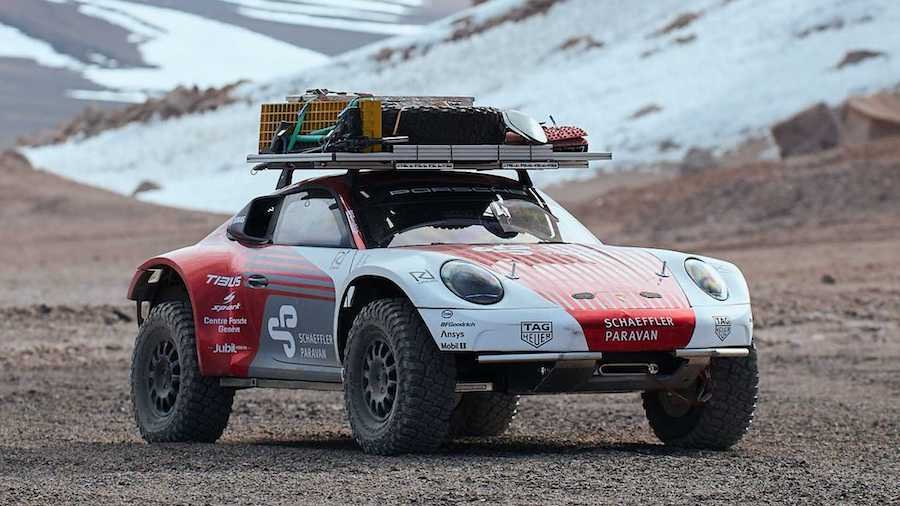Porsche 911 Prototypes With Portal Axles Climbed The World's Tallest Volcano

More than 30 years ago, Porsche engineers fitted an all-wheel-drive system to a 911 for the first time and let it loose at the Paris-Dakar rally – which it won in 1985. But Porsche's historic win at Dakar almost pales in comparison to what engineers recently accomplished during an outing to one of South America's toughest trails.
Porsche took two highly modified 911s and drove them up an active volcano. Not just any volcano, either, but the Ojos del Salado in Chile, the tallest volcano in the world. Led by legendary racing driver Romain Dumas, the duo reached an elevation of 19,708 feet (6,007 meters) while dodging boulders and dealing with temperatures as low as minus 22 degrees Fahrenheit (minus 30 Celsius).
New portal axles helped increase the ground clearance to 13.8 inches (350 millimeters) while revised front and rear clips gave the pair of Porsches better off-road angles. A set of 12.2-inch wide off-road tires afforded both cars tons of grip, while inside, a roll cage, carbon fiber seats, and safety harnesses helped protect Dumas and his team on their way up.
Engineers also added what the company calls the "Porsche Warp-Connecter." Originally designed for track use, it creates a mechanical link between all four wheels and creates constant wheel load – even when the chassis is under extreme articulation.
Even though these two 911s were highly modified for off-road duty, they did retain a few factory components, particularly the powertrain. Porsche took an unmodified version of its turbocharged 3.0-liter flat-six engine from the 4S, good for 443 horsepower (330 kilowatts), and paired it to a standard seven-speed manual transmission.
Of course, the cars wouldn’t be complete without proper racing liveries. One car wears the same scheme found on the current 963 LMDh racer while the other sports a 911-themed livery designed by Porsche’s team in Weissach.
Hopefully this extreme off-road test is a preview of things to come.


Related News
